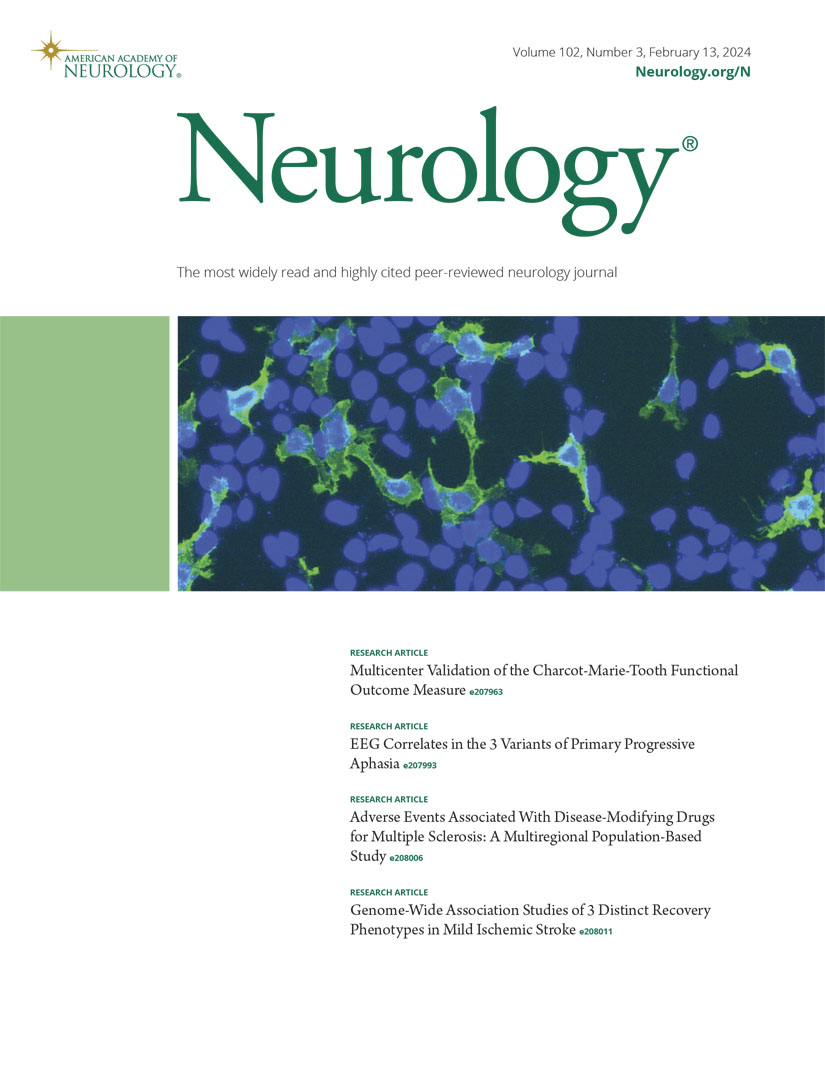环境PM2.5引起的缺血性卒中负担的全球变化:1990 - 2020年趋势和2050年预测
IF 7.7
1区 医学
Q1 CLINICAL NEUROLOGY
引用次数: 0
摘要
背景与目的缺血性卒中(IS)是世界范围内致残和死亡的主要原因,环境细颗粒物(PM2.5)暴露是一个重要的可改变的危险因素。虽然PM2.5浓度在一些地区有所下降,但研究这些变化如何影响IS负担的全球评估仍然有限。本研究的目的是量化1990年至2020年PM2.5导致的IS负担的变化,并预测到2050年的未来趋势。方法:我们使用了来自2021年全球疾病负担研究的数据,包括204个国家和世界银行地区的人口估计、IS发病率和PM2.5浓度。应用环境效益测绘和分析程序算法来估计可归因于PM2.5的IS病例。未来预测使用自回归综合移动平均模型计算。结果1990 ~ 2020年,全球PM2.5浓度下降8.18 μg/m3。这一减少与大约920,245例IS病例的避免有关,相当于2020年全球IS发病率的12.11%。东亚和太平洋地区受益最大,避免了699218例IS病例(占2020年该地区IS发病率的19.09%)。到2050年,预计PM2.5浓度将比1990年下降33.64 μg/m3,可能预防额外的6004,854例IS病例。然而,显著的差异仍然存在,特别是在PM2.5暴露和有限的卫生保健基础设施继续构成挑战的低收入地区。我们的研究结果强调了PM2.5的减少在减轻IS负担方面的巨大公共卫生效益。虽然高收入地区由于严格的空气质量法规而取得了实质性进展,但低收入地区仍然受到不成比例的影响。解决这些差异需要有针对性的污染控制政策和公平的卫生保健资源分配。空气质量管理方面的持续努力对于减轻全球信息系统负担和改善健康结果,特别是弱势群体的健康结果至关重要。本文章由计算机程序翻译,如有差异,请以英文原文为准。
Global Changes in Ischemic Stroke Burden Attributable to Ambient PM2.5: Trends From 1990 to 2020 and Projections to 2050.
BACKGROUND AND OBJECTIVES
Ischemic stroke (IS) is a leading cause of disability and mortality worldwide, with ambient fine particulate matter (PM2.5) exposure being a significant modifiable risk factor. While PM2.5 concentrations have declined in some regions, global assessments examining how these changes affect the IS burden remain limited. The aim of this study was to quantify changes in IS burden attributable to PM2.5 from 1990 to 2020 and project future trends to 2050.
METHODS
We used data from the 2021 Global Burden of Disease study, including population estimates, IS incidence rates, and PM2.5 concentrations, for 204 countries and World Bank regions. The Environmental Benefits Mapping and Analysis Program algorithm was applied to estimate IS cases attributable to PM2.5. Future projections were calculated using an autoregressive integrated moving average model.
RESULTS
Between 1990 and 2020, global PM2.5 concentrations decreased by 8.18 μg/m3. This reduction was associated with approximately 920,245 avoided IS cases, equivalent to 12.11% of the global IS incidence in 2020. The East Asia and Pacific region experienced the greatest benefit, with 699,218 IS cases avoided (19.09% of the region's IS incidence in 2020). By 2050, PM2.5 concentrations are projected to decline by 33.64 μg/m3 relative to 1990, potentially preventing an additional 6,004,854 IS cases. However, significant disparities persist, particularly in low-income regions where PM2.5 exposure and limited health care infrastructure continue to pose challenges.
DISCUSSION
Our findings highlight the substantial public health benefits of PM2.5 reductions in mitigating the IS burden. While high-income regions have seen substantial gains due to stringent air quality regulations, low-income regions remain disproportionately affected. Addressing these disparities requires targeted pollution control policies and equitable health care resource allocation. Sustained efforts in air quality management are critical to reducing the global IS burden and improving health outcomes, particularly in vulnerable populations.
求助全文
通过发布文献求助,成功后即可免费获取论文全文。
去求助
来源期刊

Neurology
医学-临床神经学
CiteScore
12.20
自引率
4.00%
发文量
1973
审稿时长
2-3 weeks
期刊介绍:
Neurology, the official journal of the American Academy of Neurology, aspires to be the premier peer-reviewed journal for clinical neurology research. Its mission is to publish exceptional peer-reviewed original research articles, editorials, and reviews to improve patient care, education, clinical research, and professionalism in neurology.
As the leading clinical neurology journal worldwide, Neurology targets physicians specializing in nervous system diseases and conditions. It aims to advance the field by presenting new basic and clinical research that influences neurological practice. The journal is a leading source of cutting-edge, peer-reviewed information for the neurology community worldwide. Editorial content includes Research, Clinical/Scientific Notes, Views, Historical Neurology, NeuroImages, Humanities, Letters, and position papers from the American Academy of Neurology. The online version is considered the definitive version, encompassing all available content.
Neurology is indexed in prestigious databases such as MEDLINE/PubMed, Embase, Scopus, Biological Abstracts®, PsycINFO®, Current Contents®, Web of Science®, CrossRef, and Google Scholar.
 求助内容:
求助内容: 应助结果提醒方式:
应助结果提醒方式:


